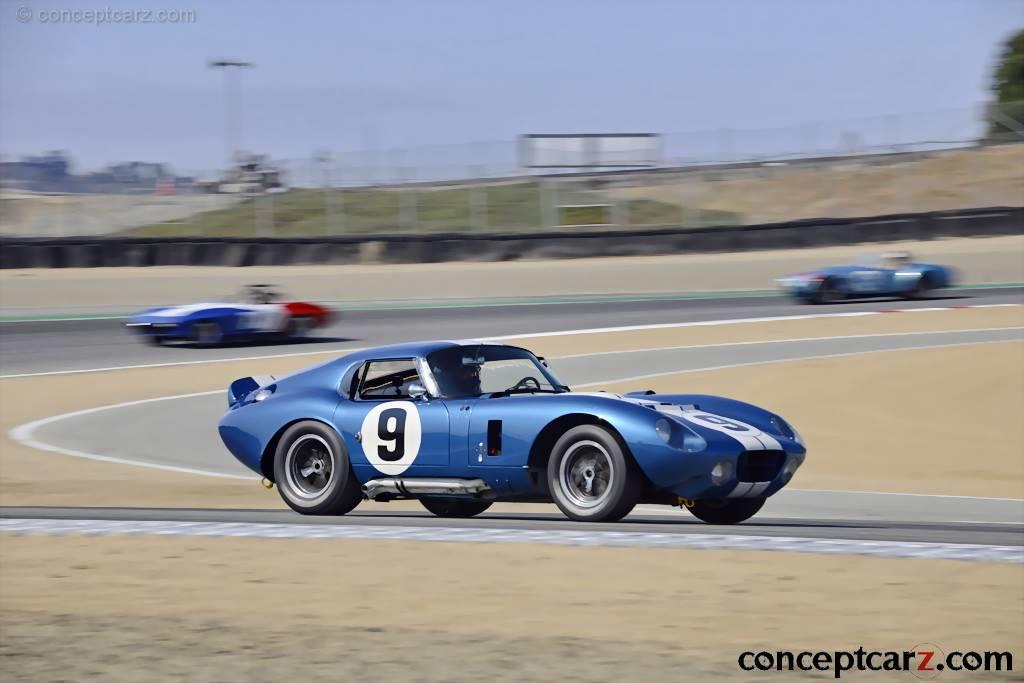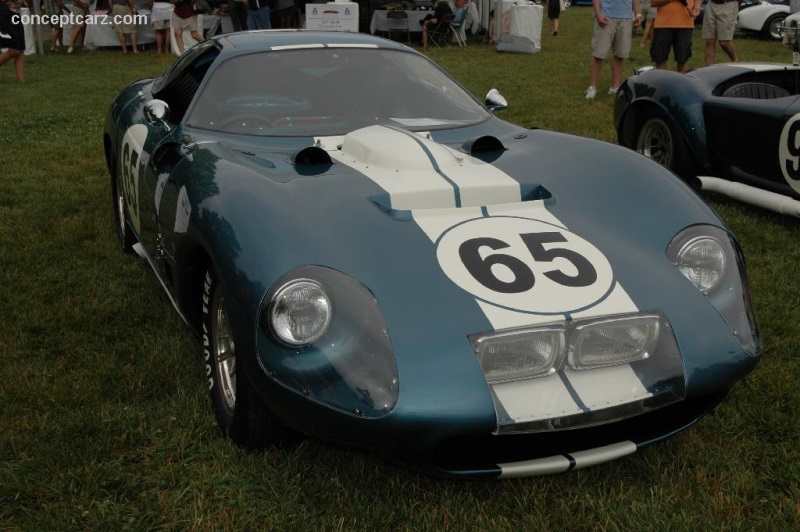1965 Shelby Cobra Daytona Navigation
The Shelby Daytona Coupe is perched at the pinnacle of the Cobra legacy and reins as one of the most successful and beautiful GT coupes ever created. Its legacy is intertwined with Carroll Shelby, one of the most successful American sports car drivers of his era, with Sports Illustrated naming him their 'Sports Car Driver of the Year' for 1956. He won three national championships and set many records during his eight-year career, including winning 19 straight races. The highlight of his racing career was winning the 24 Hours of LeMans in 1959, co-driving an Aston Martin DBR1 with Englishman Roy Salvadori.
After retiring from driving in October 1960 for health reasons, he pursued his dream of manufacturing his own sports car. Several years earlier, in 1957, he arranged for three Corvette chassis to be sent to Scaglietti in Italy for a new prototype sports car he was planning. The project was eventually canceled by GM, but it whet his appetite to pursue the concept of building his own car, utilizing light and powerful American V8 engines.
Coupe
Chassis #: CSX 2286
View info and historyThe Shelby CobraIn 1961, an opportunity arose when the Bristol Aeroplane Company stopped building automobile engines, and the sales of the Ford Zephyr engine were declining in September 1961. Charles Hurlock of AC agreed to supply Shelby with the chassis on credit and Dave Evans of Ford Motor Company provided the 221 cubic-inch and 260 cubic-inch V8 engines with transmission - also on credit. The union of the AC chassis and Ford engine birthed CSX0001 (Carroll Shelby Experimental), marketed as the Shelby AC Cobra, then AC Cobra, and eventually, the Ford Cobra. Power was initially from the 260 cubic-inch engine, followed by a Windsor Ford 289 CID V8, and then the 427 CID V8. The Shelby Cobra had a 90-inch wheelbase, was 151.5 inches long, had a width of 61 inches, and stood 49 inches tall. The Mark III with the 427 engine rested on a new chassis comprised of 4-inch main tubes and the previous leaf springs suspension was replaced by coil springs. They had a larger radiator opening and wider fenders. The AC Cobra enjoyed a successful racing career on American racing tracks in SCCA Sports Racing Class and the U.S. Road Racing Championship. In Europe, further development was needed to successfully compete in the GT category, especially against such tenured marques like Ferrari, especially on high-speed circuits such as Le Mans, with its legendary Mulsanne Straight. To that end, the development of the Shelby Daytona Coupe began. 
Coupe
Chassis #: CSX 2286
View info and historyAlthough the roadster version of the Cobra was highly developed and sophisticated, it would take a team of talented engineers and designers to maximize the vehicle's potential. Its main Achilles Heel was its aerodynamic properties and lack of stability at speed. This was not an issue on American short tracks, but its lack of aerodynamic efficiency was detrimental on the long straights of European tracks. Ample time and financing were in short supply, so the team had to rely on youthful optimism, creativity, and trackside experience. Along with Carroll Shelby, the team consisted of British racer Ken Miles, a young designer named Peter Brock, and engineers Dave MacDonald, John Collins, Bob Negstad, Phil Remington, and John Ohlsen. An enclosed version of the roadster was explored, but more was needed to contest the refined GT racers from Europe. Peter Brock
Coupe
Chassis #: CSX 2287
View info and historyPeter Elbert Brock enrolled at Stanford University in the engineering department but later dropped out to attend what was then called the Art Center School (later known as the Art Center College of Design in Pasadena, California). While attending Art Center School, he was hired by General Motors' GM Styling design department and eventually created sketches that would ultimately become the basis for the design of the next Corvette, the Corvette Stingray. The production Sting Ray was introduced in 1963, approximately four years after Brock had left GM. In 1961, Brock was hired by Carroll Shelby to run the Carroll Shelby School of High-Performance Driving. He was the company's first paid employee and would remain with the company until the end of the 1965 season. During that time, he performed a myriad of tasks including creating logos, car liveries, ads, and merchandise. Additionally, he created designs for Shelby Mustang GT350 components and designed race cars for Shelby that included the Nethercutt Mirage, Lang Cooper, DeTomaso P70, and the Shelby Daytona Cobra. At the close of 1965, Brock started his own design firm and motor racing team, Brock Racing Enterprises (BRE).Shelby Cobra Daytona Design
Coupe
Chassis #: CSX 2601
View info and history
Auction entries : 2Aviation inspired the design themes of the 1950s and 1960s, with rounded and curvaceous bodylines, teardrop shapes, and gently sloping windscreens. The design sketches penned by Brock went a step further with the addition of a Kamm-tail rear end, a long and lowered hood line, a compact interior with doors ending just inches away from the rear tire, and a low overall stance. With approval from Shelby, Miles, and Ohlsen, a wooden buck was created using Skip Hudon's crashed Cobra (CSX2014). The rolling chassis was sent to Cal Metal Shaping to be clothed in aluminum coachwork. CSX 2287Chassis number CSX 2287 was the first of six Daytona Coupes produced. It was the only one built in California as the other five examples were constructed in Modena by Carrozzeria Gransport. Ken Miles tested CSX2287 at Riverside where it proved faster than the King Cobra, traversing the short track nearly four seconds faster than the roadster. The vehicle's ultimate test and proof of concept would occur a few weeks later at the Daytona International Speedway during the Continental 200km race. Driver Dave MacDonald, joined by driver Bob Holbert, set a new track record during practice and qualified the car on the grid. During the race, the car completed 209 laps before catching fire during a pit stop. After the race, the car was repaired in preparation for the upcoming 12 Hours of Sebring. As the checkered flag fell at Sebring, the Cobra Daytona Coupe had won its class and placed 4th overall, behind Ferrari prototypes, but outpacing the Ferrari 250 GTO entered by the North American Racing Team (N.A.R.T.).
Coupe
Chassis #: CSX 2286
View info and historyCSX2287 was later entered at the 1964 LeMans race but was disqualified. Before its racing career came to a close, it established 25 different speed records at the Bonneville Salt Flats where it was driven by Craig Breedlove. Drivers who piloted the car during its racing career included Tom Payne, Bob Johnson, Phil Hill, Jochen Neerpasch, Jo Schlesser, Innes Ireland, Chris Amon, André Simon, and Maurice Dupeyron.The car was sold to Jim Russell in 1966, who later sold it to Phil Spector. In 2001, it was discovered in a barn of Donna O'Hara who had inherited the car from her father, George Band. Mr. Band was Spector's bodyguard who had acquired the car in the 1970s for $1,000.After Donna O'Hara passed away, and following a lengthy legal battle for ownership, the car was purchased by Dr. Fred Simeone and put on display in the Simeone Foundation Automotive Museum.CSX 2286
Coupe
Chassis #: CSX 2286
View info and historyChassis number CSX 2286 was given a chassis that was three inches longer than its siblings, in preparation for housing an all-aluminum 427 V8 engine. It was Carroll Shelby's hope that the aerodynamic body coupled with the lightweight and powerful Ford V8 would propel the Daytona to speeds in excess of 200 MPH. Since this potent combination would put it in direct competition with Ford's GT40 project, the request for the engine was denied. Instead, a 390 CID V8 was sourced and installed in the engine bay by Ohlsen in Italy. The car was not completed in time to compete at the 1964 24 Hours of LeMans, so Shelby fabricated a story stating that the car had been damaged while en route to France. Shelby planned on having the car ready for Monza, the last race of the season, but that never happened. The car returned to the United States in an unfinished condition and eventually fitted with a 289 V8 engine in regular wheelbase configuration. The car returned to Europe in 1965 where it was driven by Dan Gurney and Jerry Grant at LeMans, but issues with the clutch forced early retirement. This happened during the 15th hour after it had been running as high as 3rd overall and had set a GT lap record. After the 1965 season, 2286 was used in the 'Cobra Caravan' which traveled across the country to publicize Ford's racing successes.CSX 2299
Coupe
Chassis #: CSX 2286
View info and historyAlthough chassis number CSX 2286 did not contest the 1964 24 Hour of LeMans, Shelby entered CSX 2299 with John Ohlsen managing the team, and drivers including Dan Gurney and Bob Bondurant. It was the second coupe built, the first to wear Italian coachwork, and during its racing career, would complete in a total of ten FIA events in 1964 and 1965. It scored a debut class victor at LeMans in1 964, followed two months later by Dan Gurney earning a GT victory at Goodwood. Early in 1965, victories at the Daytona 2000 km and Sebring 12 Hours were also added to the car's history. It returned to LeMans in 1965 where it earned another class victory, this time driven by Jack Sears and Dick Thompson.The car was later owned by Larry H. Miller and currently resides at the Miller Motorsports Park museum in Tooele, Utah. CSX 2300
Bob Bondurant and Jochen Neerpasch drove chassis number CSX 2300 at the 1964 Tour de France. It performed admirably during the opening rounds but suffered problems on the second day of the race. It was forced to retire during Day 3 of the race, ultimately allowing Ferrari to finish the 1964 GT Championship season with 84.6 points over Shelby's 78.3 points.
Coupe
Chassis #: CSX 2286
View info and historyThe car returned in 1965 to contest the World Sports Championship, arriving at the 1000km of Nürburgring under the Ford of France banner (leased from Alan Mann - Ford's European factory outlet) wearing white with a French tricolor flag running through the middle. At the helm were drivers André Simon and Jo Schlesser who finished 3rd in the GT III category and 12th overall. After the race, the car returned to Alan Mann Racing where it was re-painted in the traditional guardsman blue metallic color and white stripes of the 1965 Shelby American team. The Nurburgring was the only time it wore the white livery.The final outing for CSX 2300 was at Reims 12 Hours where it placed second in class and ninth overall, driven by Jack Sears and John Whitmore for Alan Mann Racing.The car spent several years in Japan before it was re-acquired by Carroll Shelby for his personal collection. In 2000, it was sold at auction and now is in the care of a German enthusiast.CSX 2601
Coupe
Chassis #: CSX 2287
View info and historyChassis number CSX 2601 competed in eight races during the 1965 season, with accolades including a GT class victory at the Nurburgring 1000 km piloted by Bob Bondurant and Jochen Neerpasch. Bob Bondurant and Jo Schlesser won the 12 Heures du Reims in France, securing Shelby with the F.I.A. Championship.CSX 2601 was owned by Bob Bondurant until 1969. After passing through several caretakers, the car was sold at Mecum's Monterey auction in 2009 for the sum of $7.25 million, earning it the title of being the most expensive American car ever sold at auction. The winning bidders were members of the Argentinian Perez Companc family.Chassis CSX 2602
Coupe
Chassis #: CSX 2601
View info and history
Auction entries : 2Chassis number CSX 2602 was the final Cobra Daytona constructed. It was loaned to Scuderia Filipinetti for the 1965 24 Hours of Le Mans and driven by Peter Sutcliffe and Peter Harper. The car did not finish the race. In total, CSX 2602 raced in five events and helped secure the necessary points for Shelby to capture the FIA Championship over Ferrari. Chassis number CSX 2602 currently resides in Japan.The Accomplishments of the Shelby Cobra Daytona During its inaugural racing season in 1964, the Shelby Cobra Daytona nearly dethroned Ferrari for the GT championships victory. Despite the minimal preparation, limited resources, and skeleton crew, the Shelby Cobra Daytona was able to compete amongst Europe's greatest and seasons teams, besting them in 1965. The accomplishments are made even more impressive when considering Shelby American's commitment to the Cobra roadster program (including SCCA, NHRA, and auto-cross competition), their involvement with the GT40 program, and the Shelby Mustang.
by Daniel Vaughan | Jan 2018
After retiring from driving in October 1960 for health reasons, he pursued his dream of manufacturing his own sports car. Several years earlier, in 1957, he arranged for three Corvette chassis to be sent to Scaglietti in Italy for a new prototype sports car he was planning. The project was eventually canceled by GM, but it whet his appetite to pursue the concept of building his own car, utilizing light and powerful American V8 engines.
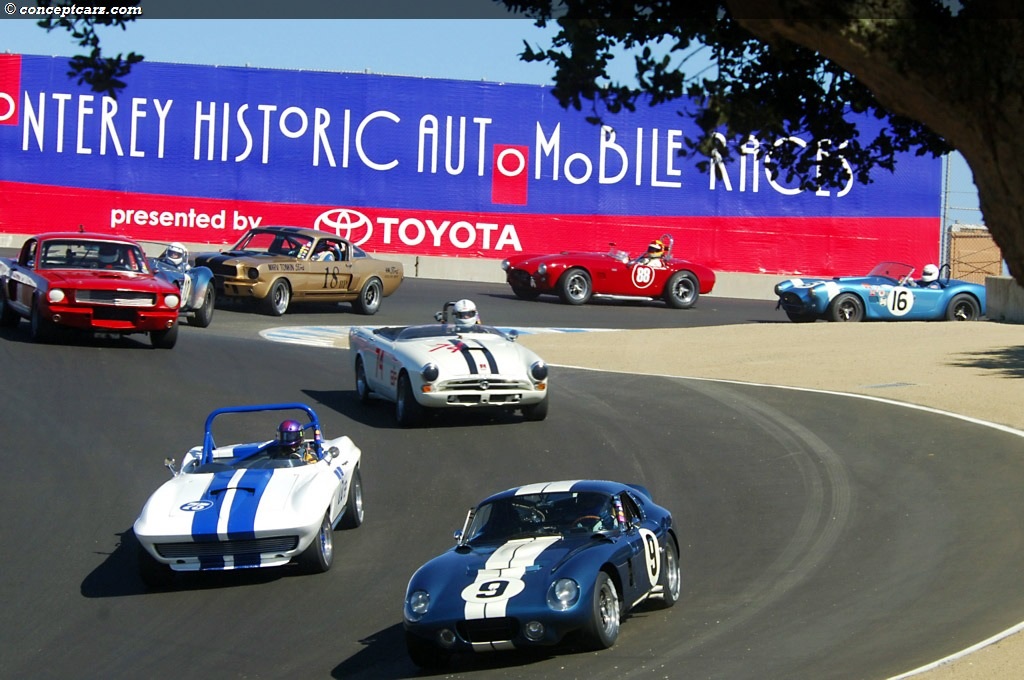
Coupe
Chassis #: CSX 2286
View info and history
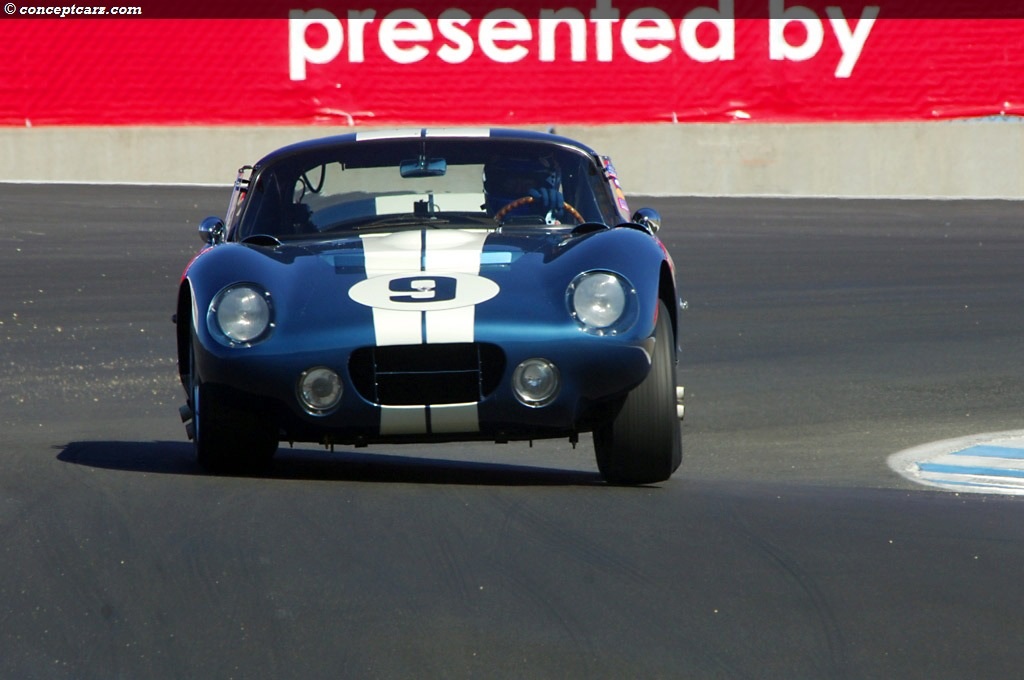
Coupe
Chassis #: CSX 2286
View info and history
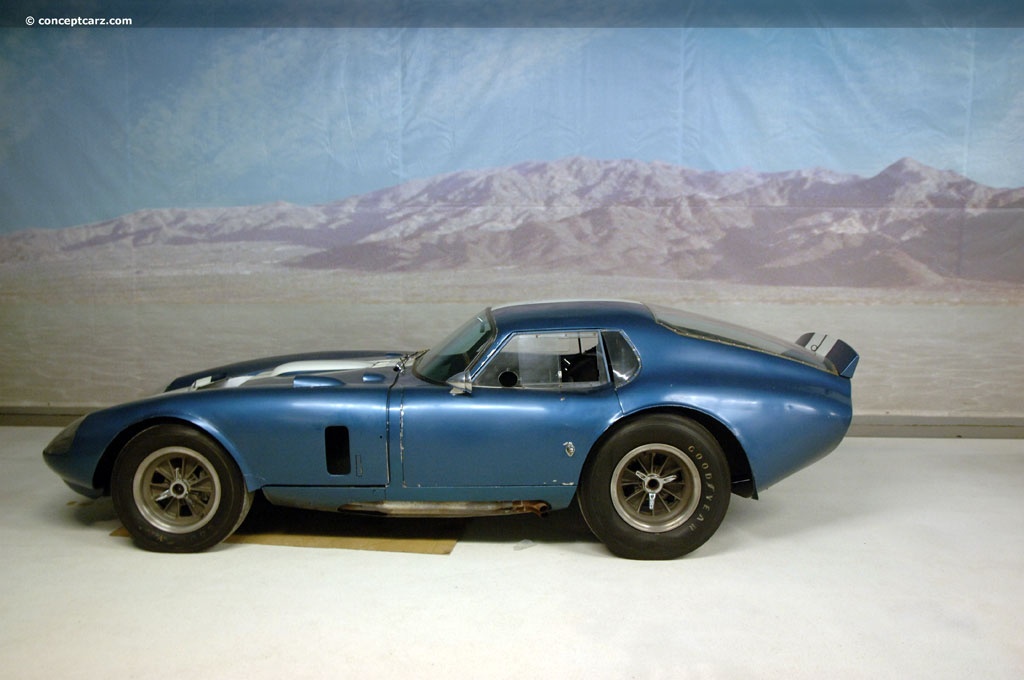
Coupe
Chassis #: CSX 2287
View info and history

Coupe
Chassis #: CSX 2601
View info and history
Auction entries : 2
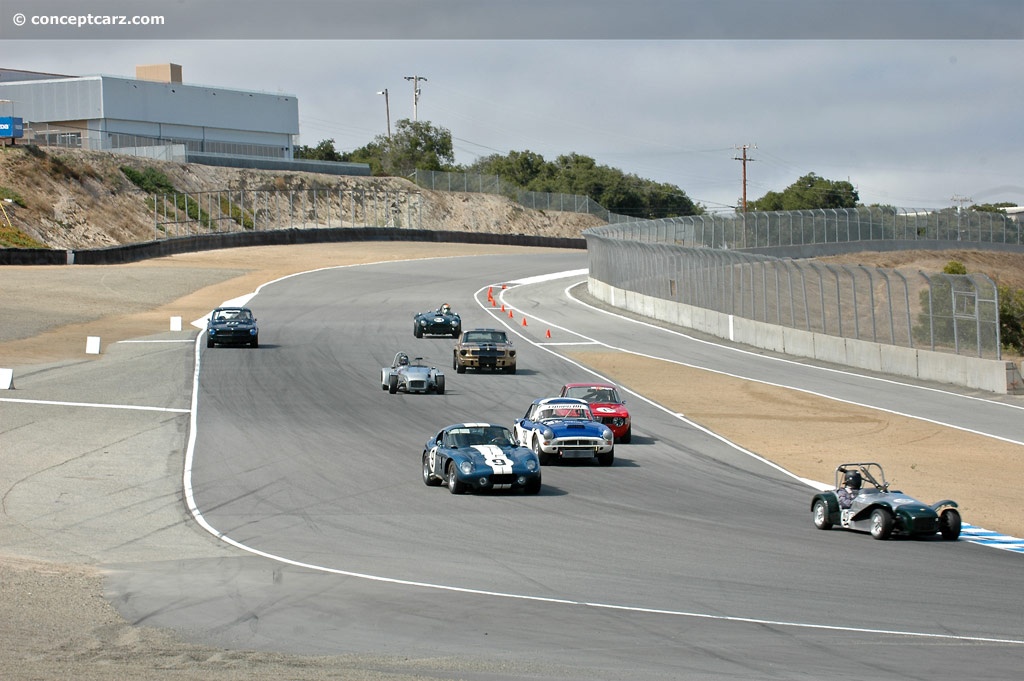
Coupe
Chassis #: CSX 2286
View info and history
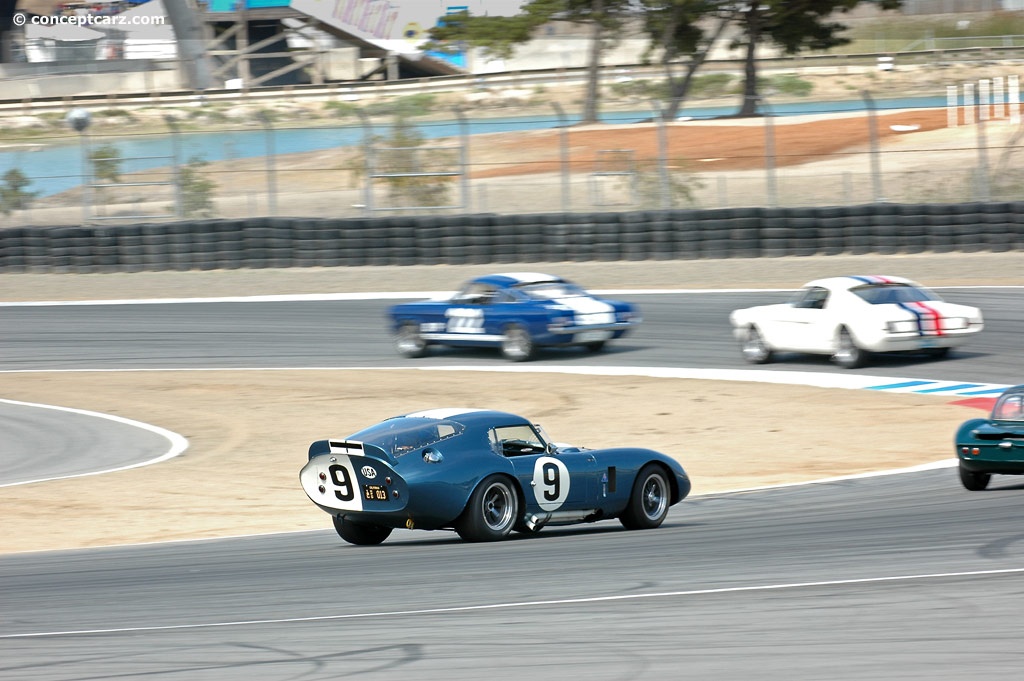
Coupe
Chassis #: CSX 2286
View info and history
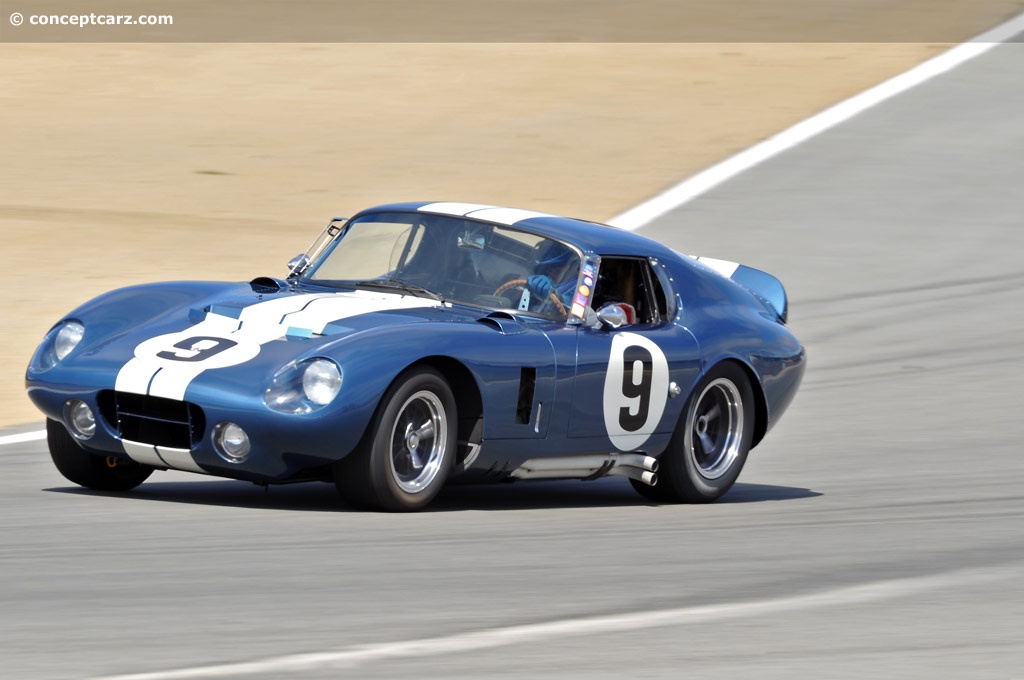
Coupe
Chassis #: CSX 2286
View info and history
Bob Bondurant and Jochen Neerpasch drove chassis number CSX 2300 at the 1964 Tour de France. It performed admirably during the opening rounds but suffered problems on the second day of the race. It was forced to retire during Day 3 of the race, ultimately allowing Ferrari to finish the 1964 GT Championship season with 84.6 points over Shelby's 78.3 points.

Coupe
Chassis #: CSX 2286
View info and history
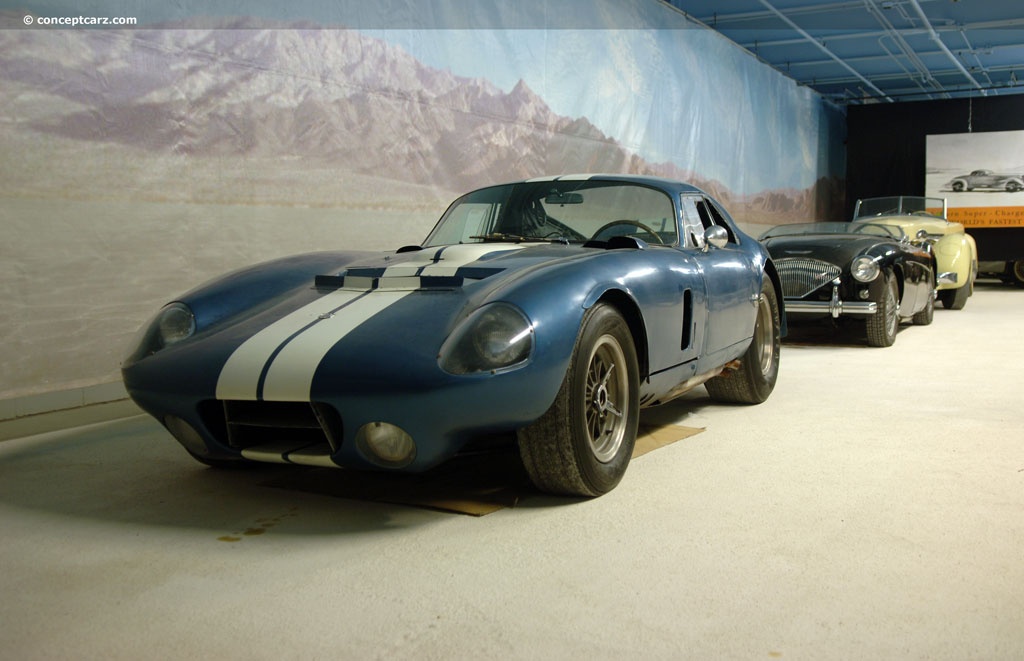
Coupe
Chassis #: CSX 2287
View info and history
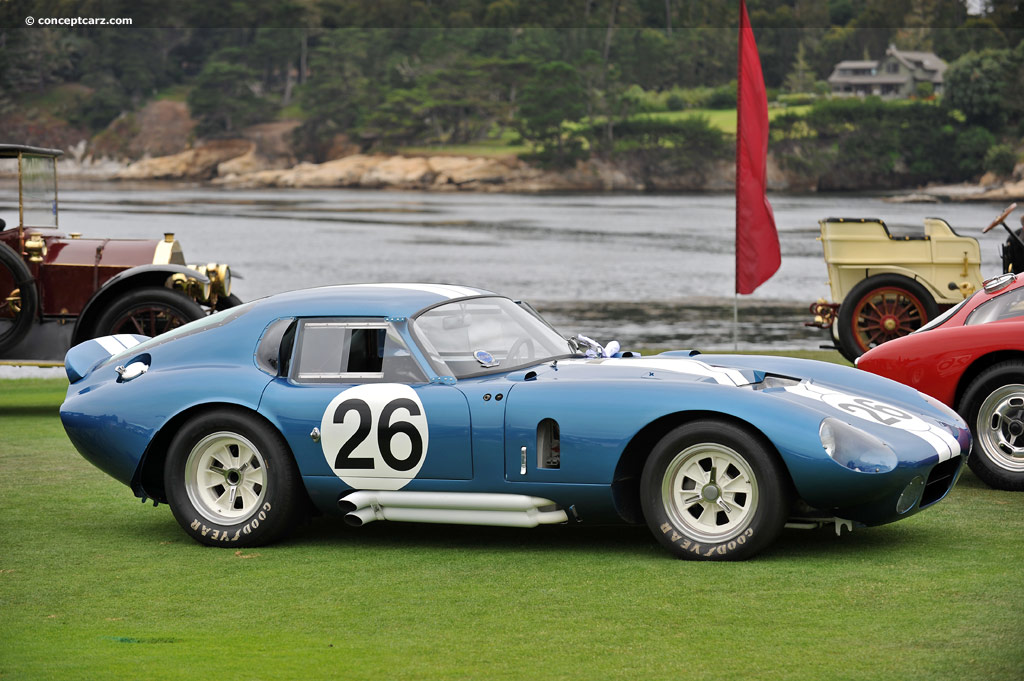
Coupe
Chassis #: CSX 2601
View info and history
Auction entries : 2
by Daniel Vaughan | Jan 2018
Related Reading : Shelby Daytona History
Carroll Shelby scored a victory for Aston Martin at the grueling 24 Hours of LeMans in 1959. Soon after, he was struck by heart problems and forced to retire from the drivers seat. This freed up time to pursue his other passion, building the worlds fastest sports car. That dream would be realized years later, adopting a powerful Ford engine into a nimble, British sports car. The car was named the....
Continue Reading >>
Continue Reading >>
Related Reading : Shelby Cobra History
The formula for the success of the Cobra came through a man named Carroll Shelby adapting a powerful Ford engine into a nimble, British sports car. A.C. Cars of Thames Ditton in Surrey, England had been producing the Ace since 1954. It was designed by John Tojeiro and featured an independent suspension by transverse leaf springs. The tubular frame body of the vehicle took its styling cues from....
Continue Reading >>
Continue Reading >>
- 1965 Shelby Cobra Daytona Menu
- Article
- Image gallery
- Valuation
- Specifications
- Profiles
- Production figures
1965 Shelby Cobra Daytona Vehicle Profiles
Recent Vehicle Additions
Related Automotive News

A Fabulous Selection Of Competition Cars Eligible For High Quality And Prestigious Events Are Coming To Auction
A FABULOUS SELECTION OF COMPETITION CARS ELIGIBLE FOR HIGH QUALITY AND PRESTIGIOUS EVENTS ARE COMING TO AUCTION NEXT WEEK
One of the two 1988 Kaliber liveried Ford Sierras built by Andy Rouse
Successful Ex Targa Florio and Silverstone Classi...
RRDC VOTES IN 26 NEW MEMBERS FOR 2015
HILLIARD, Ohio (Oct. 23, 2015) - Twenty-six race-car drivers and motorsports professionals have been voted into the Road Racing Drivers Club in 2015. The group includes 11 Regular Members from the open-wheel and sports-car racing ranks, 10 Associate...

VIC ELFORD RECEIVES RRDC'S 2015 PHIL HILL AWARD
DAYTONA BEACH, Fla. (Jan. 22, 2015) - Vic Elford, considered one of the fastest race-car drivers of the Sixties and Seventies, was honored by the Road Racing Drivers Club with the 2015 Phil Hill Award. RRDC president Bobby Rahal made the presentation...
1958 12 Hours of Sebring: Collins and Hill Escort a Red-Head Home to Victory
In a matter of months Peter Collins would lay dying of wounds received in a violent crash at the Nurburgring during the German Grand Prix. While many would be holding their breaths and facing the cold-hard truth of another motor racing death, there would...

Shelby Heritage Display Features Rarest of the Rare at Rolex Monterey Motorsports Reunion
Complementing the impressive number of authentic competition Shelby Cobras thundering around the circuit in their dedicated race group (3A) at this years Rolex Monterey Motorsports Reunion, August 17-19, will be a collection of unequalled magnitude...
